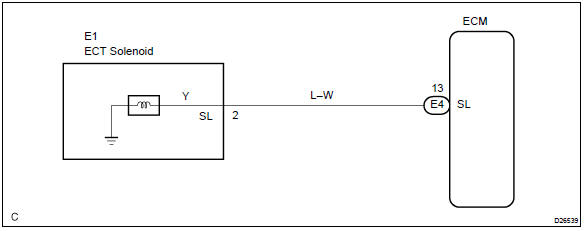Toyota Corolla (E120): Circuit description
The shift solenoid valve sl is turned ”on” and ”off” by signals from the ecm in order to control the hydraulic pressure operation, the lock–up relay valve, which then the controls operation of the lock–up clutch.
Fail safe function: if the ecm detects a malfunction, it turns the shift solenoid valve sl off.

Monitor description
Based on the signals from the throttle position sensor, the airflow meter and the crankshaft position sensor, the ecm sends a signal to the sl solenoid valve to regulate the hydraulic pressure and provide smoother gearshifts. The shift–solenoid valve sl responds to commands from the ecm. The valve controls the lock–up relay valve to perform the torque–converter lock–up function. If the ecm detects an open or short circuit for shift–solenoid sl, it will illuminate the mil.
Monitor strategy

Typical enabling condition

Typical malfunction thresholds

Component operating range

Wiring diagram

Other materials:
Using the steering wheel switches
The steering wheel switches can be used to operate a connected cellular phone.
Operating a telephone using the steering wheel switches
■ Steering wheel switches on the right hand side
1 Off hook switch
• Make a call
• Receive a call
• Display “Phone” screen
2 On hook switch
â ...
Overhaul
1. Remove oil pump relief valve
Remove the oil pump relief valve plug, oil pump relief
valve spring and oil pump relief valve.
Oil pump relief valve plug
oil pump relief valve spring
oil pump relief valve
2. Inspect oil pump assy
Remove 3 screws and o ...
Basic inspection
Resistance measuring condition of electronic parts
unless stated, all resistance is measured at an ambient
temperature of 20 c (68 °F). As the resistance
may be outside the specifications if measured at high temperatures
immediately after
the vehicle has been running, measu ...


